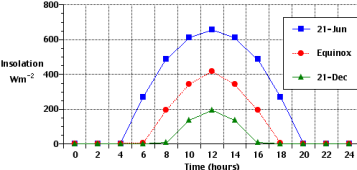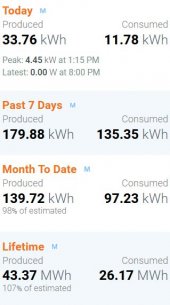I live east of Houston in an area where Centerpoint is operating the grid. Im investigating installing a small grid tie system, around 2 to 5kW. My average consumption is close to 3000kWhr/month…so this is obviously not about trying to be free of energy bills.
I’ve been researching net metering, it seems net metering is optional in Texas, so if you want it, you must find a retail electrcity provider (REP) who supports solar and sign a contract. It seems several different arrangements are offered, buyback, credits at end of month, etc. However the rate is very high, $0.15 to $0.16/kWhr. It seems like there no way it makes sense to go solar when the rate is 50% higher than the $.085/kWhr I pay with my current REP contract.
Now my questions…
This will probably seem like a stupid question, as its probably answered at a very basic beginner level, but I only find articles that gloss over this question. Its about how the “net” difference is calculated.
A) Is the metering so detailed that each time slice (minutes, seconds) the kW power value feeding into the house is positive they integrate (area under the power curve = energy) and those kWhrs are charged at $0.15, and on the flipside, any negative instantaneous power readings are integrated and this negative kWhr total for the month is bought back at their “buy” back rate (much lower than $0.015)..and the difference is my bill?
B) Or is it that they just go off the meter kWhr reading for the month, and as long as you used more than you generated for the whole month (even if there were times the meter counted in reverse) I will be billed only for the “net” consumption (difference between consumed and generated for that month?
For the small system Im looking at, Im sure my monthly consumption will always exceed production. My thought was, with the small system, I would rather get permitted with Centerpoint for the system, and once inspected and the system is emergized, I guess I’d like to keep my regular REP, so that I could pay the $0.085/kwhr consumed, and not have any buy backs or credits. I imagine the REP or Centerpoint dont like this option, and force customers to switch to a net metering contract or cut you off, disconnect you or make u disconnect your solar setup, and therefore u have to go with A) …Am I unfortunately right?
Anyway, i know that was a long post, hope my question makes sense, and I appologize if it has been answered eleewhere, I’ve looked and searched for a few days and havent found a detailed explanation.
Thanks in advance for your guidance!
I’ve been researching net metering, it seems net metering is optional in Texas, so if you want it, you must find a retail electrcity provider (REP) who supports solar and sign a contract. It seems several different arrangements are offered, buyback, credits at end of month, etc. However the rate is very high, $0.15 to $0.16/kWhr. It seems like there no way it makes sense to go solar when the rate is 50% higher than the $.085/kWhr I pay with my current REP contract.
Now my questions…
This will probably seem like a stupid question, as its probably answered at a very basic beginner level, but I only find articles that gloss over this question. Its about how the “net” difference is calculated.
A) Is the metering so detailed that each time slice (minutes, seconds) the kW power value feeding into the house is positive they integrate (area under the power curve = energy) and those kWhrs are charged at $0.15, and on the flipside, any negative instantaneous power readings are integrated and this negative kWhr total for the month is bought back at their “buy” back rate (much lower than $0.015)..and the difference is my bill?
B) Or is it that they just go off the meter kWhr reading for the month, and as long as you used more than you generated for the whole month (even if there were times the meter counted in reverse) I will be billed only for the “net” consumption (difference between consumed and generated for that month?
For the small system Im looking at, Im sure my monthly consumption will always exceed production. My thought was, with the small system, I would rather get permitted with Centerpoint for the system, and once inspected and the system is emergized, I guess I’d like to keep my regular REP, so that I could pay the $0.085/kwhr consumed, and not have any buy backs or credits. I imagine the REP or Centerpoint dont like this option, and force customers to switch to a net metering contract or cut you off, disconnect you or make u disconnect your solar setup, and therefore u have to go with A) …Am I unfortunately right?
Anyway, i know that was a long post, hope my question makes sense, and I appologize if it has been answered eleewhere, I’ve looked and searched for a few days and havent found a detailed explanation.
Thanks in advance for your guidance!
Last edited:




